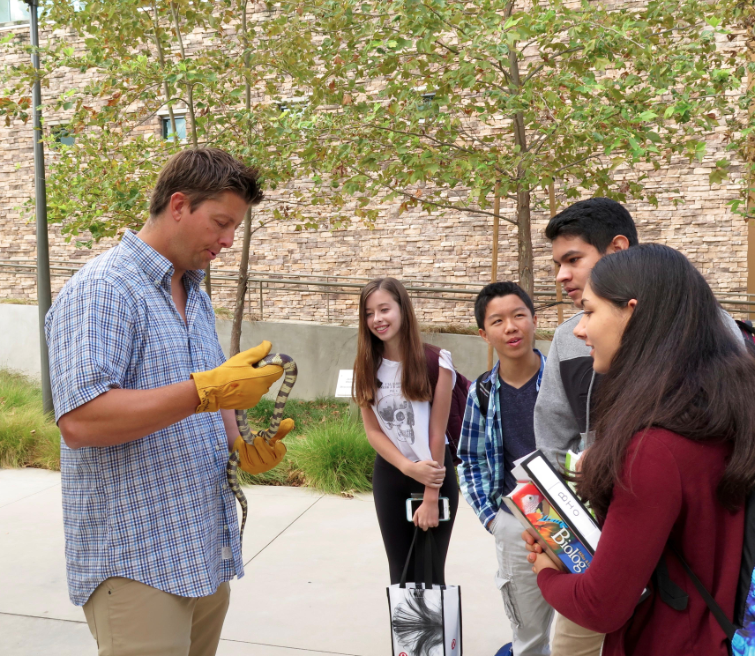Wildlife on Campus
Wilderness is alive at Sage! Students have found baby owls, rattlesnakes and gopher snakes on campus in the last year.
The school’s animal diversity stems from the Wildlife Corridor behind the school grounds to the south. We are adjacent to the Coyote Canyon area, the nation’s first native habitat implemented within a closed landfill.
You may be able to view the corridor outline fencing by looking up at the toll-road and overpass just south of Sage Hill. It begins on the Southwest of the campus and wraps around the east side and continues under the road.
Students do not have access, as it is a fenced off ecological center. This connection serves as a wildlife corridor/underpass from the other side of the toll-road to “our” side of it.
This ecological zone is home to native coyotes, rabbits and occasional bobcats. There are plenty of smaller creatures too, such as gophers and snakes.
“None of them are considered an immediate danger to students or staff as a vast majority stay away from the bustle of our campus” said Pheasant.
However, being that the immediate surrounding area is undeveloped, the native animals live very close by and inevitably come onto campus.
Pheasant’s most recent catch of a California King Snake (Lampropeltis getula californiae) gave the science departments much to talk about for the month that the snake was retained.
“We fed the snake mice caught in the garden three times. On one occasion, students and myself were able to view the snake capturing, suffocating, and swallowing the prey whole” said biology teacher Zarubin.
Zarubin knew the snake not to be dangerous to staff because “the characteristic black and white bands on it allow for ease of identification as there are no other species of snakes in the area that have similar banding patterns,” he said.
The area around the chicken coops seems to be the usual spot where members of the community have encountered foreign wildlife.
Any animals caught on campus have been released back into the area surrounding the garden where they are typically found.













